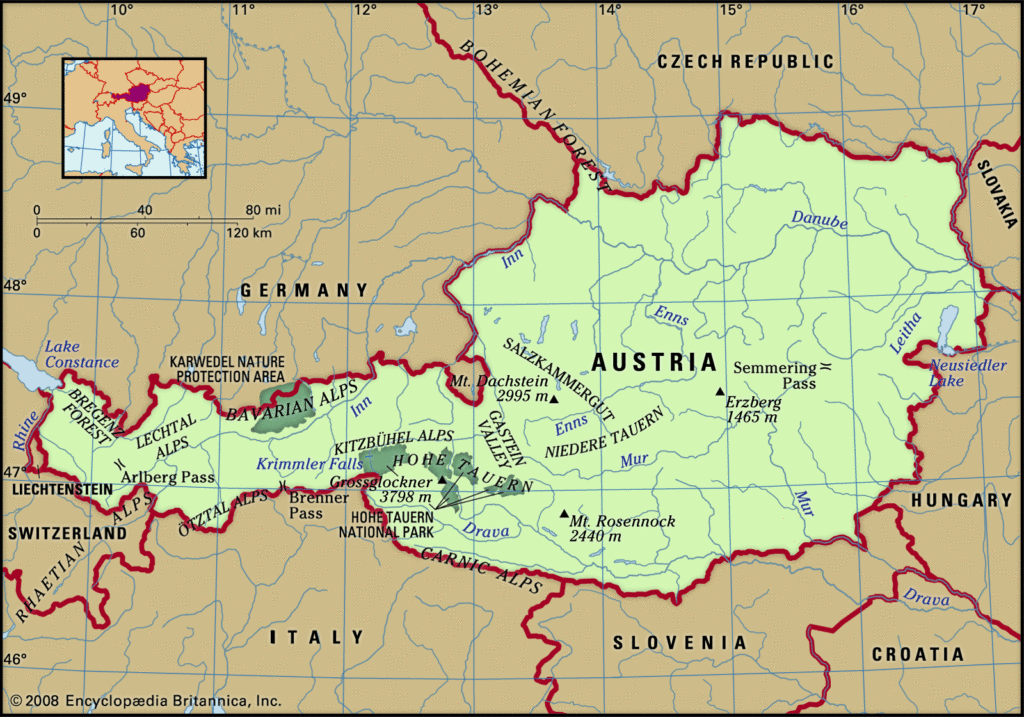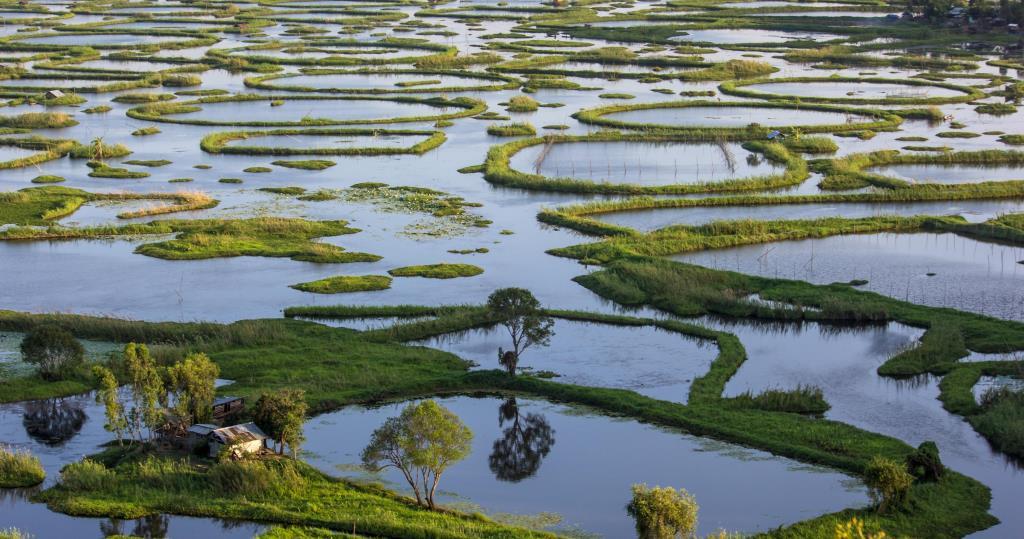Interesting facts about Austria: geography, nature, history and culture of Austria, Schönbrunn Palace, musicians and composers of Austria.
Austria is the birthplace of great musicians and composers, a country where high culture coexists with beautiful mountain landscapes and excellent gastronomy. If you still know little about this state, then 15 interesting facts will help you get to know not only the geographical features of the local provinces, but also with the eventful history of the region.
Geography
- Most of the territory of Austria is covered with mountains. The Eastern Alps make up 62% of the total area of the country. The highest point, Mount Großglockner (3798 m), is also the second highest peak in Europe. It is here that the largest glacier Pasterets is located, which has been actively melting since the 19th century. It is here that all the best ski resorts in Austria are located .
- The cascade of the Krimml waterfalls on the Krimler Ahe river in the federal state of Salzburg is the highest in Europe. The view of the falling water from a height of 380 meters will impress anyone who comes to see this magnificent natural landmark.
- The largest lake of natural origin is Neusiedler See . This is the fourth largest body of water in Europe, located in the federal state of Burgenland. Its southern tip belongs to Hungary. The lake itself is saline and is under the protection of UNESCO. Clear waters and good beaches have made the coastal area a popular holiday destination. By the way, other Austrian lakes are no less rich in entertainment and beauty.
- Today’s Austria is the German-speaking part of a huge empire called Austria-Hungary, ruled by the Habsburg dynasty from 1526 to 1918. This imperial family was one of the most powerful in Europe for several centuries. Most of the population is Catholic (about 90%). There are also Protestants and Muslims.
- Austria has five big cities: Vienna , the largest city and capital of the state, Graz , the second largest, Linz , a port city on the Danube River, Salzburg , which is of great cultural value, and Innsbruck , the capital of the Tyrol region. About one quarter of the Austrian population (at least 20%) lives in Vienna.
History
- The name of the state comes from ancient German and means “eastern country” in translation. The flag of Austria is one of the oldest in the world. Two colors, red and white, symbolize the blood of the fighters for the independence of the republic and the Danube River. According to legend, the choice of these particular colors is associated with the events of the 12th century, when Leopold V of Austria, during one of the battles of the third crusade, drenched his white shirt with blood, but after removing his belt, he found a strip of fabric untouched in red. At first, the flag was his banner, and only after that it became the flag of the whole country.
- The territory of Austria has been inhabited by people since prehistoric times. In particular, in 1991, the body of an ancient man was found in the ice of the Alps between Austria and Italy. However, the real history of the region began at a time when the local lands were chosen by the Celts, who were later conquered by the Romans. Austria was first mentioned in documents at the end of the 10th century.
- In the old days, the inhabitants of Salzburg were called nothing else than “bullwashers” (Stierwascher). There are two versions of the origin of the unusual nickname. According to the first, there was a custom among the population to wash the meat of a freshly slaughtered animal in the waters of the river flowing here, and a name was given in honor of this tradition. Another legend says that during the siege of one of the fortresses of Salzburg, the defenders suffered greatly from hunger, but did not want to surrender. To deceive the enemies, they came up with the following: every day they painted one surviving bull in different colors and, as if by chance, showed him besieging. Such tactics led to the fact that the enemies retreated, losing hope of starvation to take the fortress. At the same time, the unfortunate bull remained for centuries, giving the nickname to the population of the whole city.
- The famous Queen Marie Antoinette, wife of Louis XVI, who died tragically during the French Revolution, was the youngest daughter of Emperor Franz I and Marie Theresa. The latter successfully ruled the Austrian territories and was an active reformer. Among the representatives of the Habsburg dynasty, it was Maria Theresa who enjoyed the greatest popularity.
- The Semmering Railway in Austria is the world’s first mountain railway, the construction of which began in the middle of the 19th century. This miracle of engineering continues to function today as part of the Southern Railway. Implementation of the project was a difficult and time-consuming process, especially considering the elevation differences and difficult mountainous terrain.
Culture
- Austria is the birthplace of many famous composers, whose names are familiar to everyone from childhood. Mozart, Haydn, Schubert, Liszt, Strauss, Mahler – just a small list of world famous authors of genius musical works. The renowned Viennese Waltz was created here. The music that accompanied the Austrian folk dance was taken as a basis.
- Schönbrunn Palace is the main attraction not only in Vienna, but throughout Austria. This greatest architectural monument is one of the best “representatives” of the Austrian version of the Baroque style. 1441 rooms of the palace excite the imagination of both those who are just about to visit the imperial residence, and those who have seen all this splendor live.
- The founder of psychoanalysis, Sigmund Freud, created his theory while drinking coffee and discussing pressing issues in wonderful Austrian coffee houses. The influence of this teaching on the science of man, and indeed the entire culture as a whole, cannot be assessed. Freud was and remains the greatest scientist who made a giant breakthrough and left behind numerous disciples.
- Arnold Schwarzenegger, a world famous Hollywood actor and former governor of California, is not at all a native of one of the American states. His birthplace is a small village near the city of Graz in Austria.
- The world’s oldest Ferris wheel is located in the Prater Park in Vienna. It was built in the 19th century. Of course, the height of 65 meters is nothing compared to modern attractions, but lovers of everything unusual will definitely appreciate the old-fashionedness of the inhabitants of the Austrian capital.
Similar Articles















